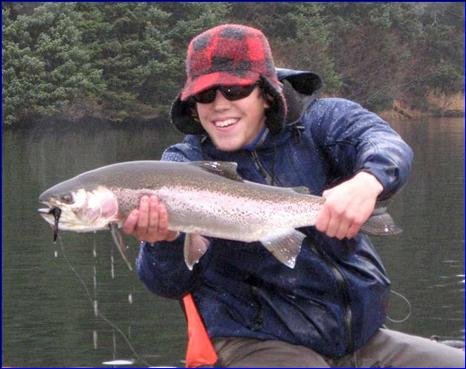
The European Union (EU) is a major consumer of fish and seafood, but a surprising fact is that only 11% of the fish consumed in the EU actually comes from EU aquaculture. A new EUMOFA study delves into the current landscape of EU aquaculture products at retail outlets, exploring the challenges faced by producers and the opportunities for growth.
EU Aquaculture Landscape
The EU produces a variety of seafood (oysters, mussels, clams) and fish (carp, trout, seabass, seabream, flatfish). While some farmed species like carp are popular choices, the EU heavily relies on imports, particularly salmon. Consumption patterns also vary greatly between EU countries. For example, coastal areas tend to have higher seafood consumption and prefer fresh local fish.
Some key facts about European aquaculture are:
- Production: EU aquaculture accounts for 28% of total fishery and aquaculture production within the EU (1.13 million tonnes in 2021).
- Consumption: Despite production, only 11% of the EU’s fish and seafood consumption comes from EU aquaculture (10.6 million tonnes in 2021).
- Main Products: Shellfish (oysters, mussels, clams) and fish (carp, trout, seabass, seabream, flatfish) dominate EU aquaculture.
- Competition: EU farmed products compete with imported products (both farmed and wild-caught) and EU wild-caught fish and seafood.
Challenges for EU Aquaculture
The study identifies several challenges that European aquaculture producers need to overcome:
- Production Bottlenecks: Administrative hurdles and resource shortages (water) hinder the growth of aquaculture in the EU.
- Cost Pressures: Rising costs of electricity, fuel, and feed impact production, especially for fish with high feed requirements.
- Seasonal Gaps: Matching production cycles with consumer demand year-round can be challenging for some species.
- Logistics and Distribution: Delivering fresh fish to remote areas is costly and limits the variety of products available.
- Global Competition: Competitive pricing is crucial, especially when competing with lower-priced imports from third countries.
- Sector Organization: The fragmented nature of the EU aquaculture sector, with many small-scale producers, limits bargaining power and investment capacity.
Consumer Preferences and Sales Channels
The study also outlines consumer preferences, with key data points being:
- Supermarkets and Fishmongers: Most consumers buy fish and seafood at supermarkets and hypermarkets (79%), followed by fishmongers (43%).
- Urban vs. Rural Consumption: Consumption is generally higher in urban areas with more purchasing power and access to fishmongers offering a wider variety of fresh options.
- Coastal Advantage: Coastal areas tend to have higher consumption of fresh local fish (both wild-caught and farmed).
- Wild-Caught vs. Farmed Fish: While not the primary purchasing criterion, some consumers express a slight preference for wild-caught fish.
Growth Opportunities
EUMOFA also identifies opportunities for European aquaculture producers, summarized as:
- Strategic Differentiation: Highlighting unique selling points such as sustainable practices, local origin, or convenience can help EU farmed fish stand out.
- Investing in Communication: Effective marketing campaigns can educate consumers about the benefits of EU farmed fish.
- Collaboration is Key: Producer organizations and cooperatives can enhance bargaining power and support investment in marketing and innovation.
- Meeting Consumer Needs: Adapting to changing consumer preferences for variety, convenience, and environmental responsibility is essential.
- Transparency and Information: Providing clear and straightforward information to consumers about EU farmed fish can build trust and encourage purchasing decisions.
The Future of EU Aquaculture
The future of farmed fish sales in the EU depends on several factors, including:
- Consumer Demand Trends
- Ability to Address Production Challenges
- Investment in Marketing and Communication Strategies
- Structure and Organization of the Aquaculture Sector
By overcoming existing challenges and seizing opportunities, EU aquaculture can play a more significant role in meeting the EU’s seafood demand while promoting sustainable practices.
Stay Always Informed
Join our communities to instantly receive the most important news, reports, and analysis from the aquaculture industry.
Reference (open access)
EUMOFA. 2024. Study on the challenges of aquaculture products in food outlets. 88 p.
Editor at the digital magazine AquaHoy. He holds a degree in Aquaculture Biology from the National University of Santa (UNS) and a Master’s degree in Science and Innovation Management from the Polytechnic University of Valencia, with postgraduate diplomas in Business Innovation and Innovation Management. He possesses extensive experience in the aquaculture and fisheries sector, having led the Fisheries Innovation Unit of the National Program for Innovation in Fisheries and Aquaculture (PNIPA). He has served as a senior consultant in technology watch, an innovation project formulator and advisor, and a lecturer at UNS. He is a member of the Peruvian College of Biologists and was recognized by the World Aquaculture Society (WAS) in 2016 for his contribution to aquaculture.




